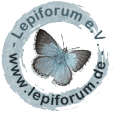

 +1Kontinente:AS
+1Kontinente:AS2. Weitere Informationen
2.1. Etymologie (Namenserklärung)
Für die Namenserklärung wird die Hilfe der Erstbeschreiber benötigt. Nazari et al. (2024: 11) begründen: "The species name Ahura (Lord) is an ancient Iranian (Avestan) designation for a particular class of Zoroastrian divinities that also includes Ahuramazda, the creator deity in Zoroastrianism."
2.2. Taxonomie und Faunistik
Nazari et al. (2024) studierten die Genetik der Aporia-Falter in den Hochlagen des nördlichen Iran und stellten dabei fest, dass die bisher unter "Aporia leucodice ssp. illumina Grum-Grshimailo, 1890" und "Aporia belucha ssp. pseudoillumina Tshikolovets 2021" gemeldeten Tiere aus dem Aporia leucodice-Komplex weder zu Aporia leucodice noch zu Aporia belucha passten. Sie beschrieben eine neue Art (Aporia ahura) für die Tiere aus den Bergen des mittleren Alborz und werteten das Taxon illumina - mit den Tieren im Iran östlich davon - zur Art auf.
Sie stellten fest: "The fact that Northern Iranian lineages in this group are sister to the nominotypical Central Asian A. leucodice with high support invalidates their association with A. belucha (i.e. [13]). The UNH wing pattern and the genitalia of the dissected specimens from the two populations in N and NE Iran showed clear differences from the Central Asian A. leucodice and all other species in this group (Figs. 3 and 4)." Und dann: "The divergent cluster of Aporia illumina from Central Alborz mountains in N Iran represents populations that require a new name. Here we propose: Aporia ahura Nazari & Naderi sp. nov.".
Sie berichten über kleinere äußere und Genitalunterschiede und argumentieren dann auch mit der Genetik: "Aporia ahura sp. nov. shows a COI barcode distance of 2.2 ± 1.0% from A. illumina, differing from it by 21 fixed substitutions along the 658bp of the DNA barcode region. The available sequences for A. ahura sp. nov. (n = 4) varied in length, nevertheless they showed variation in six additional sites resulting in four different haplotypes. In contrast, all barcoded specimens of A. illumina (n = 12), even though originating from often distant localities, were barcode identical."
A. ahura ist der westlichste Vorposten des Aporia leucodice-Komplexes. Zur Verbreitung wird in der Erstbeschreibung mitgeteilt: "Distribution and bionomics. The new species is so far found only in Central Alborz mountains, Alborz province in Northern Iran (Fig. 1). In addition to the type locality (Dizin), specimens illustrated from Marzanabad in Central Alborz [67] belong to A. ahura. The new species inhabits altitudes between 2000–2500 m a.s.l. in mountain slopes with thick vegetation and Juniperus trees."
2.3. Typenmaterial
Nazari et al. (2024: 10) stellten zusammen: "Holotype: ♂, Iran, Alborz Province, Dizin, Varangehrood, 2200 m, 18.VI.2008, leg. A.R. Naderi; SampleID 283b, dissection HA-2964. Not barcoded. Deposited in the coll. National Natural History Museum and Genetic Resources, Tehran, Iran. Paratypes (7 ♂♂, 5 ♀♀): Iran, Alborz Province, same data as holotype, 4 ♂♂ 1 ♀ coll. A.R. Naderi (SampleIDs ARPI-9999–030 to 032); 1 ♂ 3 ♀♀ leg. A.R. Naderi, coll. P. Zehzad (no SampleIDs); 1 ♂ leg. A.R. Naderi, coll. A.H. Harandi (no SampleIDs); 1 ♂ 2000 m, 21.VI.2012, leg. A.R. Naderi, coll. P. Zehzad (no SampleIDs); 1 ♀ Chalus road, Dizin, 2500 m, 2.VII.1994, leg. and coll. A.R. Naderi (barcoded, SampleID ARPI-9999–029)."
(Autor: Erwin Rennwald)
2.4. Literatur
- Groum-Grshimaïlo, G. (1890): Le Pamir et sa faune lépidoptérologique. — Mémoires sur les lépidoptères 4: 1-576, pl. I-XXI. St.-Pétersbourg (M. M. Stassulewitsch).
- Erstbeschreibung: Nazari, V., Lukhtanov, V., Naderi, A., Della Bruna, C., Zahiri, R., Cesaroni, D., Sbordoni, V. & V. Todisco (2024): COI Barcodes combined with multilocus data for representative Aporia taxa shed light on speciation in the high altitude Irano-Turanian mountain plateaus (Lepidoptera: Pieridae). — BMC Ecology and Evolution, 24 (105): 1-13. [zum open-access-Artikel auf bmcecolevol.biomedcentral.com]



